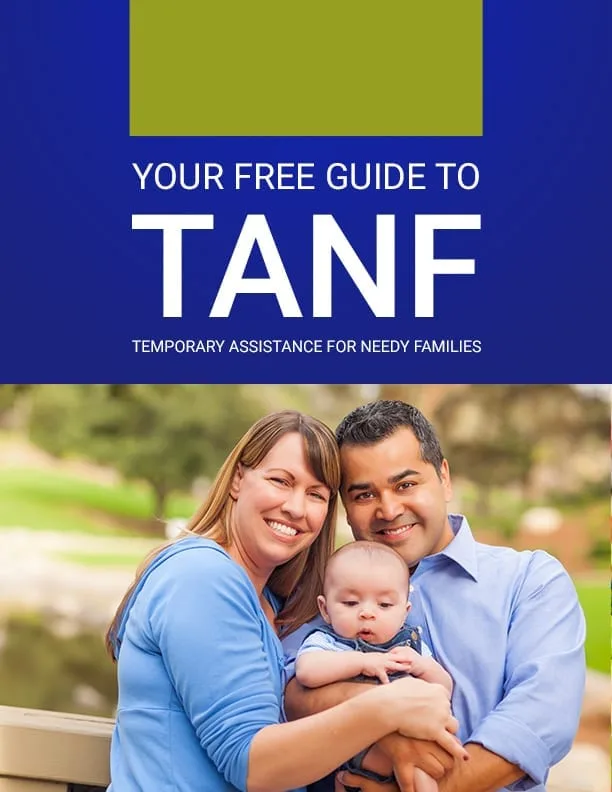Your Free Guide to Understanding Rent-to-Own Contracts
Your Free Guide to Understanding Rent-to-Own Contracts
We are privately owned and not affiliated with the government in any way or form.

Introduction
Rent-to-own is a unique and flexible pathway to homeownership that combines the benefits of renting and buying. For many aspiring homeowners, this approach offers a viable alternative to traditional home purchasing, especially for those who face challenges such as poor credit, insufficient down payment savings, or uncertain financial circumstances. In a rent-to-own arrangement, tenants lease a property with the option or obligation to purchase it at a later date, providing them with the opportunity to build equity and establish a stable living situation while working towards ownership.
This method of acquiring a home has gained popularity due to its ability to bridge the gap between renting and owning, allowing individuals to transition from tenants to homeowners over time. Understanding the rent-to-own process and the intricacies of the contracts involved is crucial for anyone considering this option. It involves more than just finding a property and moving in; it requires careful evaluation of the terms, financial planning, and awareness of the potential risks and rewards.
What is Rent-to-Own?

Rent-to-own is a housing arrangement that combines elements of renting and buying. In a rent-to-own agreement, a tenant leases a property with the option or obligation to purchase it at a later date.
This type of arrangement allows potential buyers to move into a home, pay rent, and, after a specified period, buy the property. The rent-to-own process offers a pathway to homeownership for individuals who may need time to improve their credit scores, save for a down payment, or stabilize their financial situation.
How It Compares
Unlike traditional renting, where tenants pay rent with no future ownership stake, rent-to-own agreements provide an opportunity to build equity and work towards owning the home. In contrast to a traditional home purchase, rent-to-own requires less upfront capital and may offer more flexible terms. However, it also involves unique risks and obligations that potential buyers must understand.
History of Rent-to-Own
The concept of rent-to-own has been around for decades, initially gaining popularity in markets where credit was tight, and traditional mortgage financing was difficult to obtain. Over the years, rent-to-own has evolved and adapted to changing market conditions, offering a viable alternative for many aspiring homeowners. Today, rent-to-own is increasingly popular in areas with high housing demand and limited affordable options.
Types of Rent-to-Own Contracts
Understanding the different types of rent-to-own contracts is essential for anyone considering this homeownership path. Rent-to-own agreements generally fall into two main categories: lease-option agreements and lease-purchase agreements.
Each type offers distinct features and implications, providing varying levels of flexibility and commitment. By exploring these contract types, potential buyers can determine which arrangement best suits their needs and circumstances.
Lease-Option Agreement
A lease-option agreement is a rent-to-own contract that gives the tenant the option, but not the obligation, to purchase the property at the end of the lease term. This type of agreement typically includes a predetermined purchase price and an option fee, which is a non-refundable payment that secures the tenant’s right to buy the property. If the tenant decides not to purchase the home, they forfeit the option fee but are not legally required to buy the property.
Lease-option agreements offer flexibility, allowing tenants to live in the home and decide later whether to buy it. The option fee and a portion of the monthly rent may be applied towards the purchase price, helping tenants build equity over time.
However, these agreements also come with risks, such as the potential for the property value to decrease or the tenant’s inability to secure financing when the option period ends.
Potential benefits of a lease-option agreement include the following:
- Provides an opportunity to build equity while renting
- Offers flexibility to decide on purchasing the property.
- Allows time to improve credit and save for a down payment.
Potential drawbacks of a lease-option agreement include the following:
- Option fee is non-refundable.
- Purchase price is usually fixed and may not reflect market changes.
- Tenant may lose the option fee and rent credits if they choose not to buy.
Lease-Purchase Agreement
A lease-purchase agreement, also known as a lease-to-own agreement, differs from a lease-option agreement in that it obligates the tenant to purchase the property at the end of the lease term. This type of contract is binding, meaning that the tenant must buy the home regardless of their financial situation or market conditions when the lease expires.
Lease-purchase agreements are more stringent than lease-option agreements, requiring tenants to be more certain about their ability and desire to buy the property. These agreements typically include a non-refundable option fee, predetermined purchase price, and detailed terms regarding the purchase process.
Potential benefits of a lease-purchase agreement include the following:
- Guarantees the tenant the right to purchase the property.
- Can lock in a favorable purchase price in a rising market.
- Provides a structured path to homeownership.
Potential drawbacks of a lease-purchase agreement include the following:
- Obligates the tenant to buy the property, regardless of circumstances.
- Higher financial risk if the tenant cannot secure financing.
- Less flexibility compared to lease-option agreements.
Understanding The Rent-to-Own Process

The rent-to-own process involves several steps, including finding suitable properties, evaluating them, negotiating terms, and signing the contract. Each step requires careful planning and consideration to ensure a successful transition from renting to owning. By gaining a clear grasp of these stages, potential buyers can navigate the rent-to-own journey with confidence and make informed decisions along the way.
Finding Rent-to-Own Homes
The first step in the rent-to-own process is to find suitable properties. Potential buyers can start by researching available rent-to-own homes in their desired location.
Online platforms and real estate websites offer a convenient way to search for rent-to-own homes. Popular websites and apps provide listings, search filters, and detailed property information. Utilizing these resources can help you identify potential properties and streamline your search process.
Real estate agents who specialize in rent-to-own transactions can provide valuable assistance in finding suitable properties and negotiating terms. These professionals have access to exclusive listings and can guide you through the rent-to-own process, ensuring you find a property that meets your needs and budget.
In addition to online platforms and real estate agents, exploring local listings in newspapers, community bulletins, and networking with friends and family can uncover rent-to-own opportunities. Word of mouth and local knowledge can lead to hidden gems that may not be widely advertised.
Evaluating Properties
Once potential rent-to-own homes are identified, it is crucial to evaluate them thoroughly. Prospective buyers should inspect the home to assess its condition and determine if any repairs or renovations are needed. Understanding the property’s market value is also essential to ensure the purchase price is fair and reasonable. Hiring a professional home inspector and appraiser can provide an unbiased assessment of the property’s condition and value.
Negotiating Terms
Negotiating the terms of a rent-to-own agreement is a critical step in the process. Potential buyers should work with the property owner or landlord to agree on key terms, including the monthly rent, purchase price, lease duration, and option fee. It is essential to ensure that the terms are fair and clearly outlined in the contract to avoid misunderstandings or disputes later on.
Signing the Contract
Once the terms are negotiated, the next step is to sign the rent-to-own contract. It is advisable to consult with a real estate attorney to review the contract and ensure all legal considerations are addressed.
Important clauses and terms should be thoroughly understood, including the option fee, rent credits, maintenance responsibilities, and conditions for exercising the purchase option. Signing the contract formalizes the agreement and sets the stage for the tenant’s journey towards homeownership.
Typical Eligibility Criteria
Before embarking on a rent-to-own journey, it’s important to understand the typical eligibility criteria that landlords and property owners may require. These criteria often include income requirements, credit score thresholds, and a stable rental history. Meeting these standards is crucial for securing a rent-to-own agreement and ensuring a smooth transition from renter to homeowner. By knowing what to expect and preparing accordingly, potential buyers can enhance their chances of qualifying for a rent-to-own contract and successfully achieving their homeownership goals.
Income
Rent-to-own agreements often have income requirements to ensure tenants can afford the monthly payments and eventual purchase. This may include minimum income levels and verification of employment and income. Potential buyers should be prepared to provide documentation and demonstrate their financial stability.
Credit Score
While rent-to-own agreements may be more flexible than traditional mortgages, there are still credit score requirements to consider. Landlords and property owners may set minimum credit score thresholds to assess the tenant’s creditworthiness. Reviewing and improving your credit score can enhance your eligibility for rent-to-own agreements.
Other Factors
In addition to income and credit score requirements, landlords may consider other factors such as rental history and background checks. Demonstrating a stable rental history and a clean background can strengthen your application and increase your chances of securing a rent-to-own agreement.
Weighing the Pros and Cons of Rent-to-Own
While rent-to-own arrangements offer numerous benefits, such as a flexible route to owning a home and the opportunity to build equity over time, they also come with potential drawbacks, including higher monthly payments and financial risks if the purchase does not go through. By carefully evaluating both the advantages and disadvantages, prospective buyers can make informed decisions that align with their financial goals and housing needs.
Benefits
Rent-to-own arrangements offer several benefits, making them an attractive option for many aspiring homeowners.
- Path to Homeownership Rent-to-own provides a structured pathway to homeownership, allowing tenants to move into the property and work towards buying it. This arrangement can be particularly beneficial for individuals who may not qualify for traditional mortgage financing due to credit issues or lack of a substantial down payment.
- Flexibility in Decision Making Rent-to-own agreements, especially lease-option agreements, offer flexibility by allowing tenants to decide later whether to buy the property. This flexibility can be advantageous for those who need time to improve their financial situation or assess the property’s suitability.
- Building Equity A portion of the monthly rent and the option fee may be applied towards the purchase price, helping tenants build equity over time. This can make the transition to homeownership more affordable and provide a sense of investment in the property.
Drawbacks
Despite the benefits, rent-to-own arrangements also come with certain drawbacks that potential buyers should be aware of.
- Higher Monthly Payments Rent-to-own agreements often involve higher monthly payments compared to traditional renting. This is because a portion of the rent is allocated towards the eventual purchase of the property. Potential buyers need to ensure they can afford these higher payments.
- Risk of Losing Investment If the tenant decides not to purchase the property or is unable to secure financing, they may lose the option fee and any rent credits accrued. This can result in a significant financial loss, making it essential to thoroughly evaluate the decision before entering into a rent-to-own agreement.
- Maintenance Responsibilities Rent-to-own agreements may require tenants to assume maintenance and repair responsibilities typically handled by landlords in traditional rental arrangements. This added responsibility can be financially and logistically challenging for some tenants.
Things to Consider Before Signing a Rent-to-Own Contract
Before signing a rent-to-own contract, it is crucial to assess your financial preparedness. This involves evaluating your current financial situation, creating a budget, and ensuring you can afford the higher monthly payments associated with rent-to-own agreements. Saving for a down payment and having a financial plan in place can help you succeed in the rent-to-own process.
Your credit score and history play a significant role in your ability to secure financing when the time comes to purchase the property. Reviewing your credit report, addressing any issues, and taking steps to improve your credit score can enhance your chances of obtaining a mortgage and successfully completing the rent-to-own process.
Understanding the property’s market value and potential appreciation or depreciation is essential before signing a rent-to-own contract. Conducting market research and consulting with real estate professionals can help you make an informed decision and avoid overpaying for the property.









